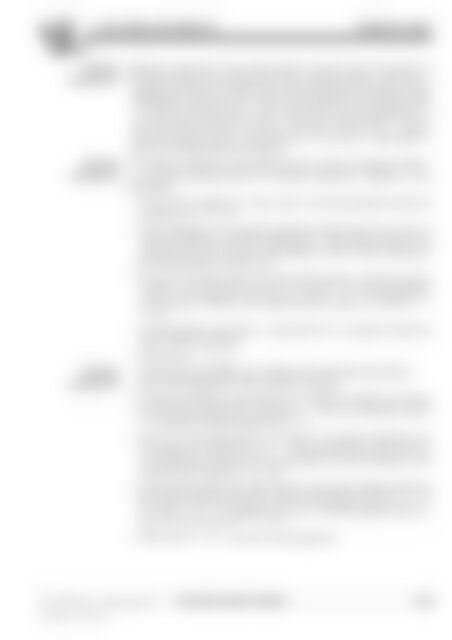RIC-0563 Developing algebraic thinking
Create successful ePaper yourself
Turn your PDF publications into a flip-book with our unique Google optimized e-Paper software.
EXCITING EXPONENTS<br />
Teachers notes<br />
Exciting Exciting exponents 3<br />
is the first activity involving sums of powers of<br />
exponents 3 numbers. Again, the magnitude of the numbers plays a key role in<br />
deciding the location of the ten tiles. The first equation illustrates a basic<br />
Pythagorean Triple (6, 8, 10). In the second equation, the resulting sum<br />
of 7 limits the exponents to 2 and 1. Similarly, in the last equation, 41<br />
limits the base numbers to 4 and 5. The sum of 126 is 125 + 1, where<br />
125 is the perfect cube 5 3 . The exponent of 4 must by 0. This leaves 7<br />
and 9 to complete the third equation.<br />
Exciting<br />
exponents 4<br />
Exciting<br />
exponents 5<br />
The last two activities in the section focus on sums of squares. There<br />
are several starting points for Exciting exponents 4. Below is one<br />
possibility.<br />
• In the fourth equation, 5 2 and a sum of thirty-something limits the<br />
equation to 5 2 + 3 2 = 34.<br />
• Quick subtraction in the second equation shows that, with a sum of<br />
ninety-something and with subtracting 3 2 , the missing digit to be<br />
squared must give a result in the eighties. Only 9 2 works; therefore,<br />
the missing digit in the sum is 0.<br />
• To have a sum that ends in 5 for the third equation requires that the<br />
number to be squared must end in a 6 (49 + _6). Two possibilities<br />
exist, 4 and 6; however, the 4-digit has been used. So, we have 7 2 +<br />
6 2 = 85.<br />
• The first equation must have 7 2 to get close to 53. Therefore, the second<br />
base number must be 2.<br />
• This leaves 2 2 + 1 2 = 5.<br />
Exciting exponents 5 is more difficult than Exciting exponents 4<br />
due to the magnitude of the numbers involved.<br />
• In the third equation, since the sum is 3 digits in length, the choices<br />
for the second addend are limited to 6 2 , 7 2 , 8 2 or 9 2 . However, only 8 2<br />
+ 6 2 produces a perfect square sum, 10 2 .<br />
• With a 5 in the ones place of the sum in the second equation, the<br />
first addend is limited to 3 2 or 7 2 , which would give sums of 25 or<br />
65, respectively. Since the 6-tile was used in the third equation, the<br />
solution here must be 3 2 + 4 2 = 25.<br />
• In the fourth equation 25 2 + 625. There are two pairs of digits remaining<br />
that, when squared, produce a 5 as the ones digit, 8 2 and 9 2 (_4 + _1)<br />
or 4 2 and 7 2 (_6 + _9). However, 28 2 or 29 2 are both greater than 25 2 .<br />
The solution must be 24 2 + 7 2 = 25 2 .<br />
• This leaves 8 2 + 15 2 = 289 for the first equation.<br />
R.I.C. Publications ® www.ricgroup.com.au DEVELOPING ALGEBRAIC THINKING 69<br />
ISBN 978-1-74126-088-5

















